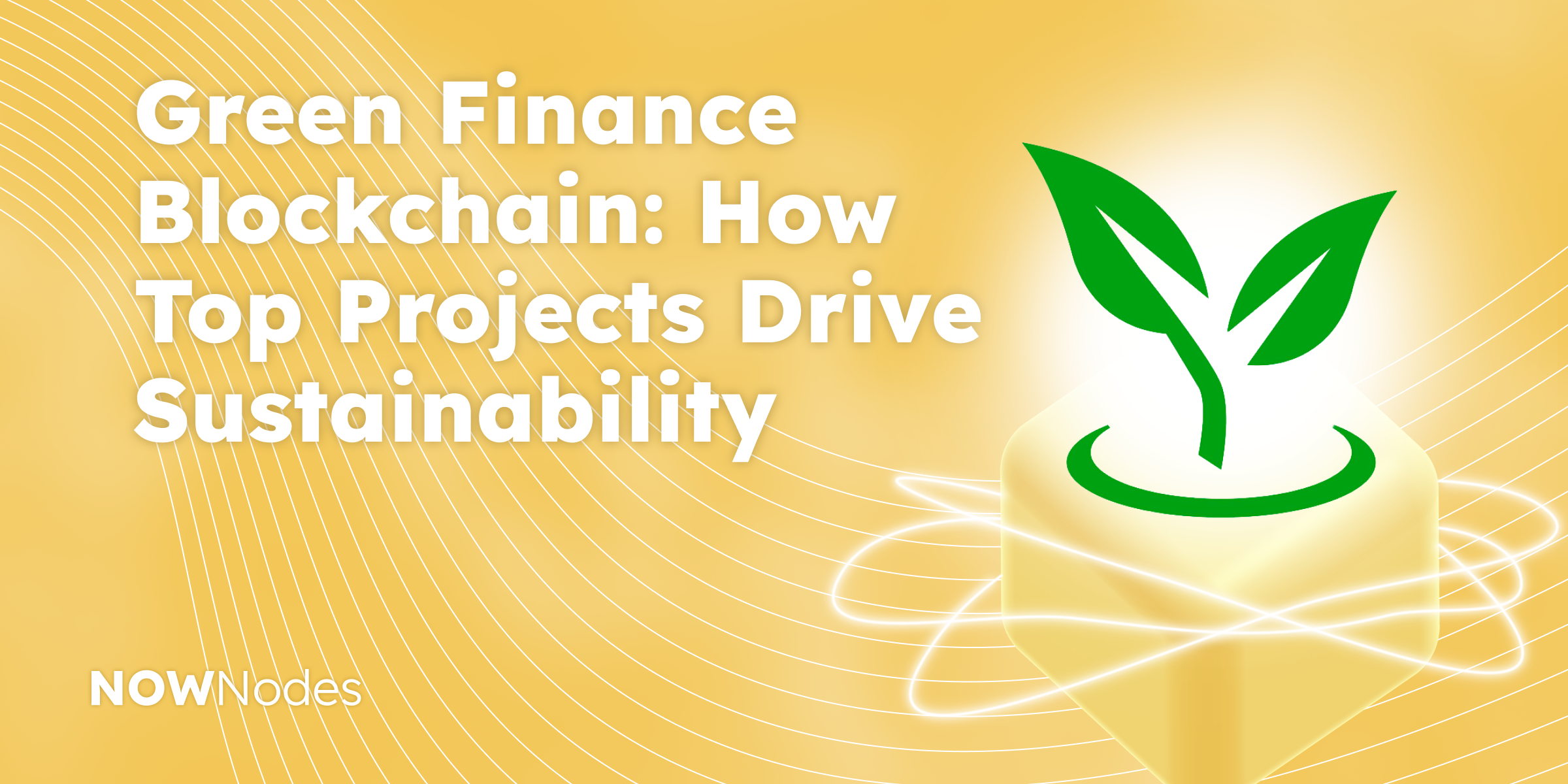As global awareness of environmental sustainability grows, the blockchain industry is under increasing scrutiny for its energy consumption. This is particularly true for blockchains using energy-intensive Proof-of-Work (PoW) algorithms, such as Bitcoin. The environmental impact of these networks has sparked a significant push towards greener solutions within the blockchain space.
In response to these concerns, many blockchain networks are adopting more sustainable practices to reduce their environmental footprint. These eco-friendly blockchain projects are leading the charge towards a more sustainable future in finance, offering both efficiency and lower energy consumption.
In this article, we will explore some of the leading eco-friendly blockchain projects. We will examine several leading eco-friendly blockchains, including Ethereum (ETH), Cardano (ADA), Polkadot (DOT), and Algorand (ALGO). We will also highlight Nano and EGLD for their exceptional energy efficiency. Additionally, we will cover other notable green blockchains, such as Tezos (XTZ), EOS, Solana (SOL), Stellar (XLM), Zilliqa (ZIL), and Horizen (ZEN), particularly focusing on the upcoming Horizen 2.0 upgrade.
The Environmental Impact of Traditional Blockchains
Before we explore eco-friendly alternatives, let’s understand why energy efficiency is a critical issue in blockchain technology. Bitcoin, the first and most well-known cryptocurrency, uses the Proof-of-Work (PoW) consensus mechanism. This method requires miners to solve complex mathematical problems to validate transactions, leading to high energy consumption.
This process consumes a lot of energy and has faced criticism for its significant carbon footprint. In fact, some estimates suggest that Bitcoin’s annual energy consumption rivals that of entire countries.
This has sparked a movement towards finding more energy-efficient solutions, with many new blockchains adopting greener consensus mechanisms, such as Proof-of-Stake (PoS) and other innovative technologies designed to minimize environmental impact.
Eco-Friendly Blockchain Projects
1. Ethereum (ETH)
Ethereum, the second-largest blockchain by market capitalization, recently transitioned from Proof-of-Work (PoW) to Proof-of-Stake (PoS) with the Ethereum 2.0 upgrade, known as “The Merge.” This transition cut Ethereum’s energy consumption by up to 99.95%, according to estimates from the Ethereum Foundation. The PoS mechanism eliminates the need for energy-intensive mining, making Ethereum much more environmentally friendly.
2. Cardano (ADA)
Cardano has positioned itself as one of the most eco-conscious blockchains in the market. From its inception, Cardano was designed to operate on a PoS consensus mechanism called Ouroboros, which is highly energy-efficient compared to PoW. Cardano’s emphasis on peer-reviewed research and development further cements its reputation as a sustainable, scientifically-driven blockchain. The Cardano network has a relatively low carbon footprint, making it a popular choice among environmentally-conscious investors.
3. Polkadot (DOT)
Polkadot is another blockchain that prioritizes energy efficiency. It uses a PoS consensus mechanism called Nominated Proof-of-Stake (NPoS), which is both secure and energy-efficient. Polkadot’s unique multi-chain architecture allows multiple blockchains to operate under its umbrella, reducing the need for energy-intensive consensus across separate blockchains. By enabling interoperability between chains, Polkadot contributes to a more efficient use of resources within the blockchain ecosystem.
4. Algorand (ALGO)
Algorand has established itself as a leader in sustainable blockchain technology by implementing a Pure Proof-of-Stake (PPoS) consensus mechanism. Algorand’s approach not only ensures fast transaction finality but also significantly reduces energy consumption. The network has gone a step further by becoming carbon-negative, offsetting more carbon emissions than it generates. Algorand has partnered with ClimateTrade to help manage its carbon offsetting efforts, making it one of the greenest blockchains in operation today.
The Stars of Eco-Friendly Blockchains: Nano and Elrond
1. Nano (NANO)
Nano stands out as one of the most energy-efficient blockchain projects in existence. Unlike blockchains that use Proof-of-Work (PoW) or Proof-of-Stake (PoS) consensus mechanisms, Nano employs a unique approach known as Open Representative Voting (ORV). This mechanism is significantly less energy-intensive compared to traditional methods.
Nano’s lightweight architecture minimizes computational power, letting transactions process with an extremely low energy footprint. In fact, some reports suggest that Nano’s energy consumption per transaction is among the lowest in the entire blockchain space.
This commitment to sustainability and efficiency positions Nano as a leading example of what a truly green blockchain can achieve. Its innovative consensus mechanism not only reduces environmental impact but also enhances overall transaction efficiency.
Nano’s zero-fee transactions and near-instant transaction times further contribute to its appeal, making it a highly scalable and eco-friendly solution for global finance.
2. Elrond (EGLD)
Elrond is another blockchain project that places a strong emphasis on environmental sustainability. It employs a Secure Proof-of-Stake (SPoS) consensus mechanism that is both energy-efficient and extremely fast. It can process up to 15,000 transactions per second (TPS). This high scalability reduces energy consumption per transaction, making Elrond one of the most efficient blockchains for large-scale operations.
In addition to its energy efficiency, Elrond has been actively promoting sustainability initiatives and partnerships aimed at reducing its carbon footprint. The project’s focus on creating a “carbon-negative” blockchain is a significant step toward making blockchain technology more sustainable in the long term.
Other Notable Eco-Friendly Blockchains
1. Tezos (XTZ)
Tezos is another prominent eco-friendly blockchain. It operates using a PoS consensus mechanism, which drastically reduces its energy consumption compared to PoW blockchains. Tezos evolves through on-chain governance, allowing it to upgrade without needing to fork. This flexibility helps it adapt to new sustainability measures and makes it an attractive option for green-conscious projects.
2. EOS
EOS is a PoS-based blockchain that focuses on high scalability and low energy consumption. Its delegated PoS (DPoS) system ensures efficient resource use while maintaining fast transaction speeds. EOS aims to offer a high-performance blockchain infrastructure that can handle enterprise-level applications without the environmental costs associated with PoW systems.
3. Solana (SOL)
Solana uses a combination of Proof-of-History (PoH) and PoS to create a highly efficient, scalable blockchain. Although critics have highlighted Solana’s energy use during periods of high network activity, the network’s innovative consensus mechanisms significantly improve upon traditional PoW systems.
4. Stellar (XLM)
Stellar is known for its focus on financial inclusion and sustainability. The Stellar Consensus Protocol (SCP) efficiently conserves energy. Stellar’s lightweight structure and commitment to providing low-cost financial services make it one of the most eco-friendly blockchain networks.
5. Zilliqa (ZIL)
Zilliqa uses a unique sharding mechanism that allows the network to process transactions more efficiently, reducing energy consumption. The network’s hybrid consensus model—combining PoW for shard creation and Practical Byzantine Fault Tolerance (PBFT) for consensus within shards—helps balance security and sustainability.
6. Horizen (ZEN)
Horizen, with its upcoming Horizen 2.0 upgrade, is positioning itself as a blockchain focused on scalability, privacy, and sustainability. It will include advanced zero-knowledge proof mechanisms, which significantly reduce computational overhead and energy consumption. By enabling efficient, secure proof verification within its ecosystem, Horizen aims to offer a greener alternative to traditional blockchain networks. The new Horizen 2.0 EVM chain supports energy-efficient zkDApps, making it an ideal platform for developers who focus on eco-friendly applications.
Conclusion: The Future of Green Finance
As blockchain technology continues to evolve, the shift toward eco-friendly solutions is gaining momentum. Networks such as Ethereum, Cardano, Polkadot, Algorand, Nano, and Elrond are at the forefront of reducing blockchain’s environmental impact. By adopting energy-efficient consensus mechanisms, these projects are not only advancing sustainable finance but also shaping a more eco-friendly blockchain ecosystem.
Innovations like Horizen 2.0 and the increasing emphasis on zero-knowledge applications are bringing blockchain technology closer to global sustainability goals. As more projects focus on energy efficiency and environmental responsibility, the blockchain industry has the potential to play a significant role in the green finance movement.



